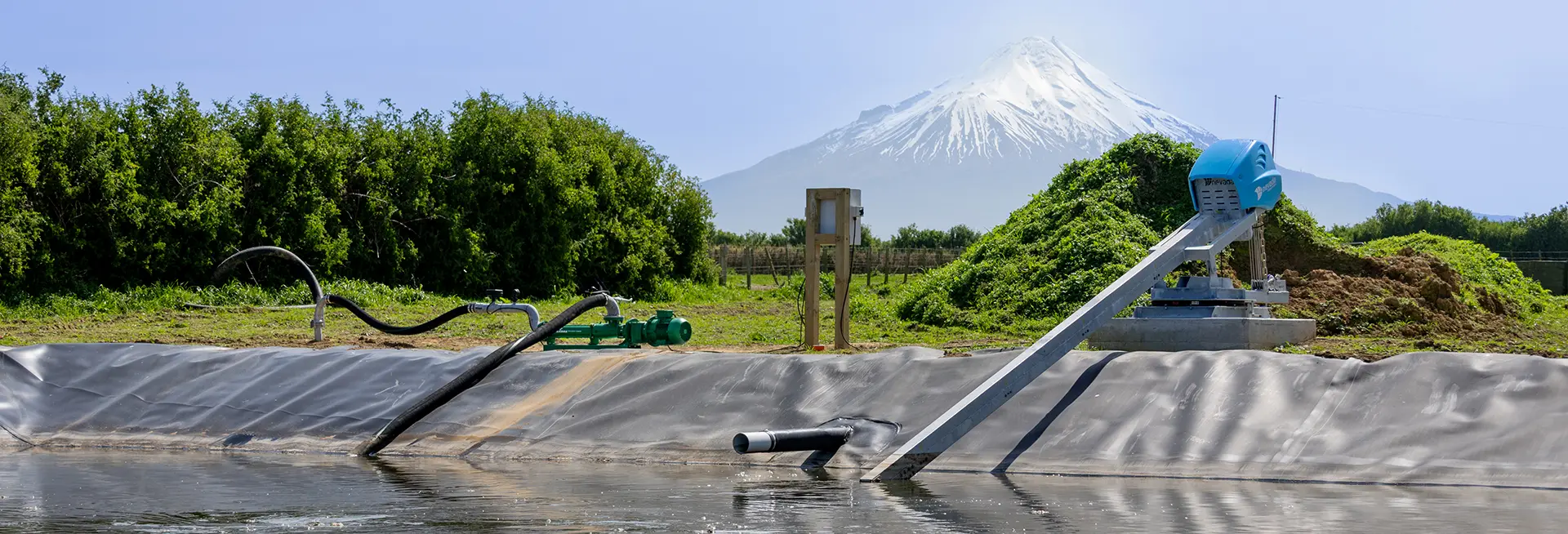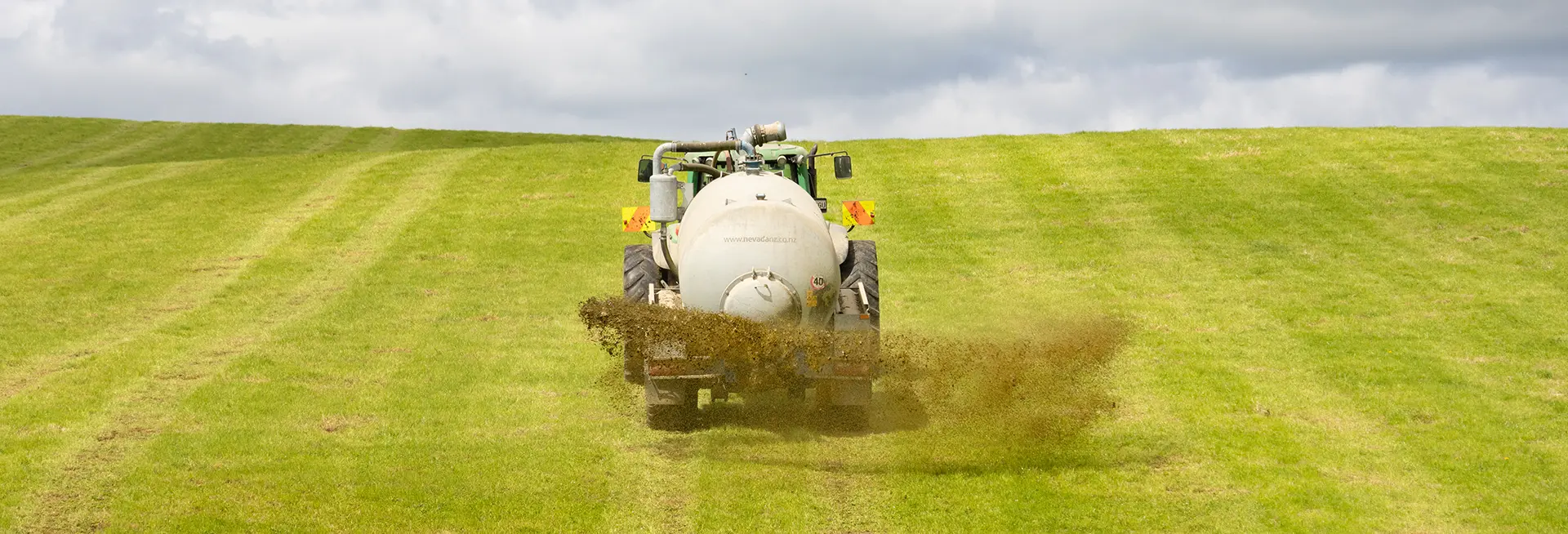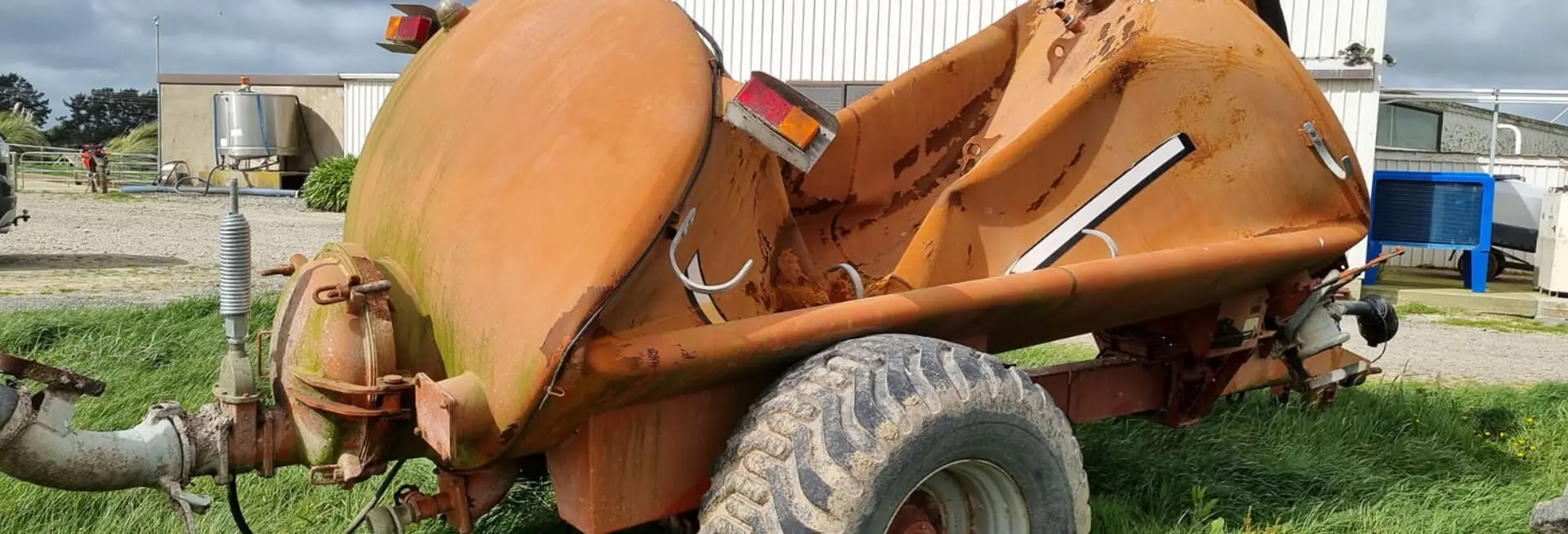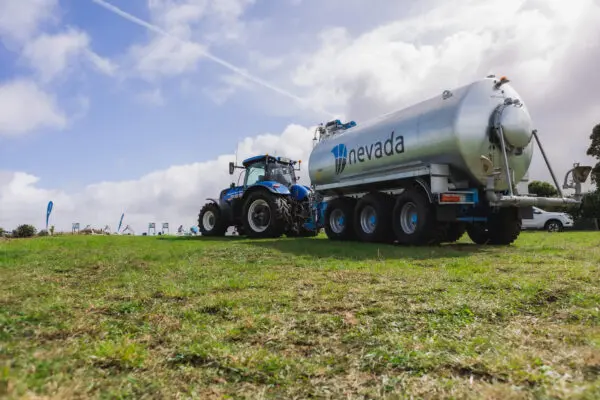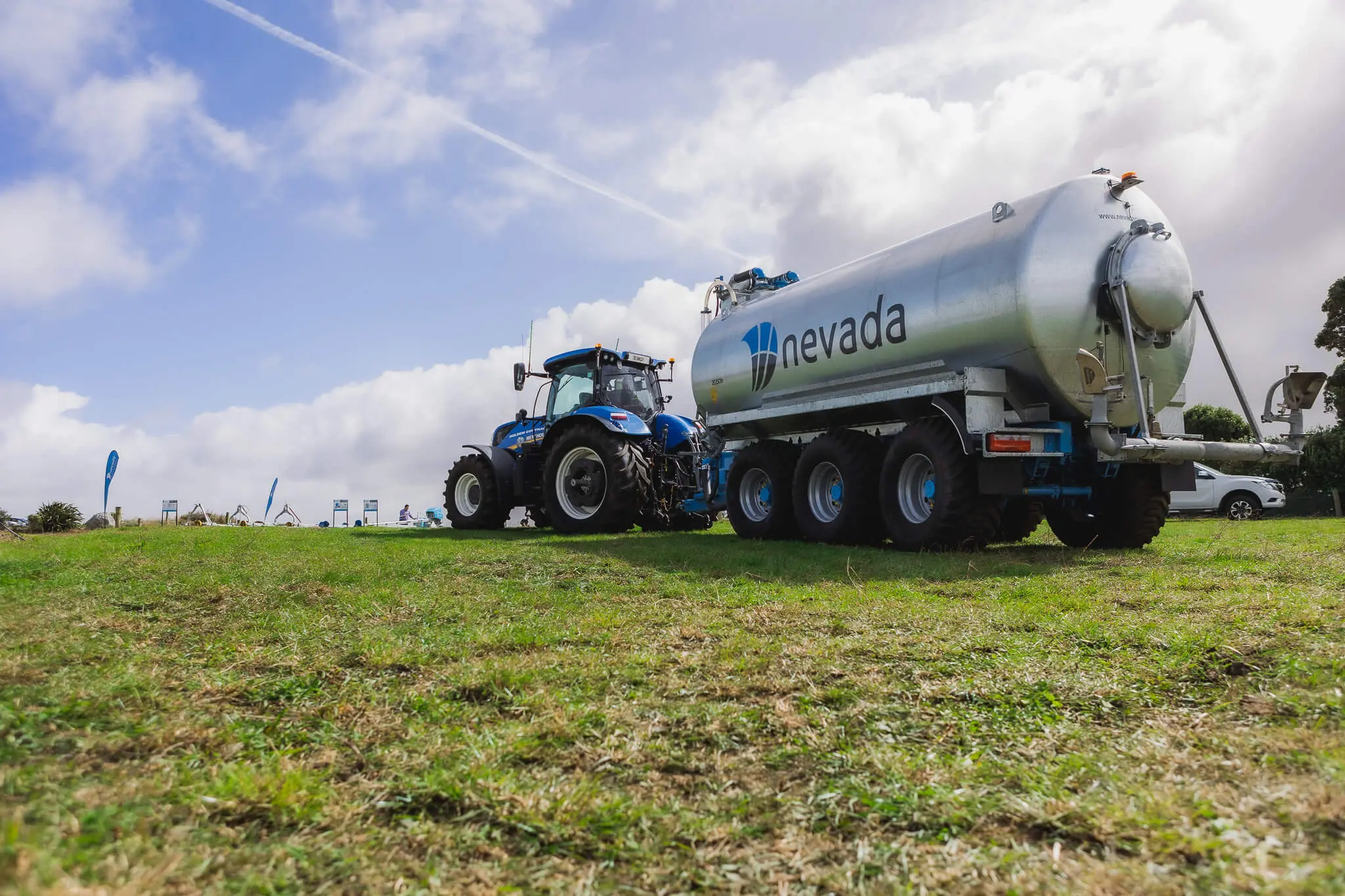Farm Dairy Effluent storage
Where storage is limited, farmers will usually need to apply effluent to the land in spring. If you are designing a new system, we strongly recommend including sufficient storage, to contain all the Farm Dairy Effluent produced over winter and spring. This will reduce the pressure on farm workers, and better utilize the nutrient value of the effluent.
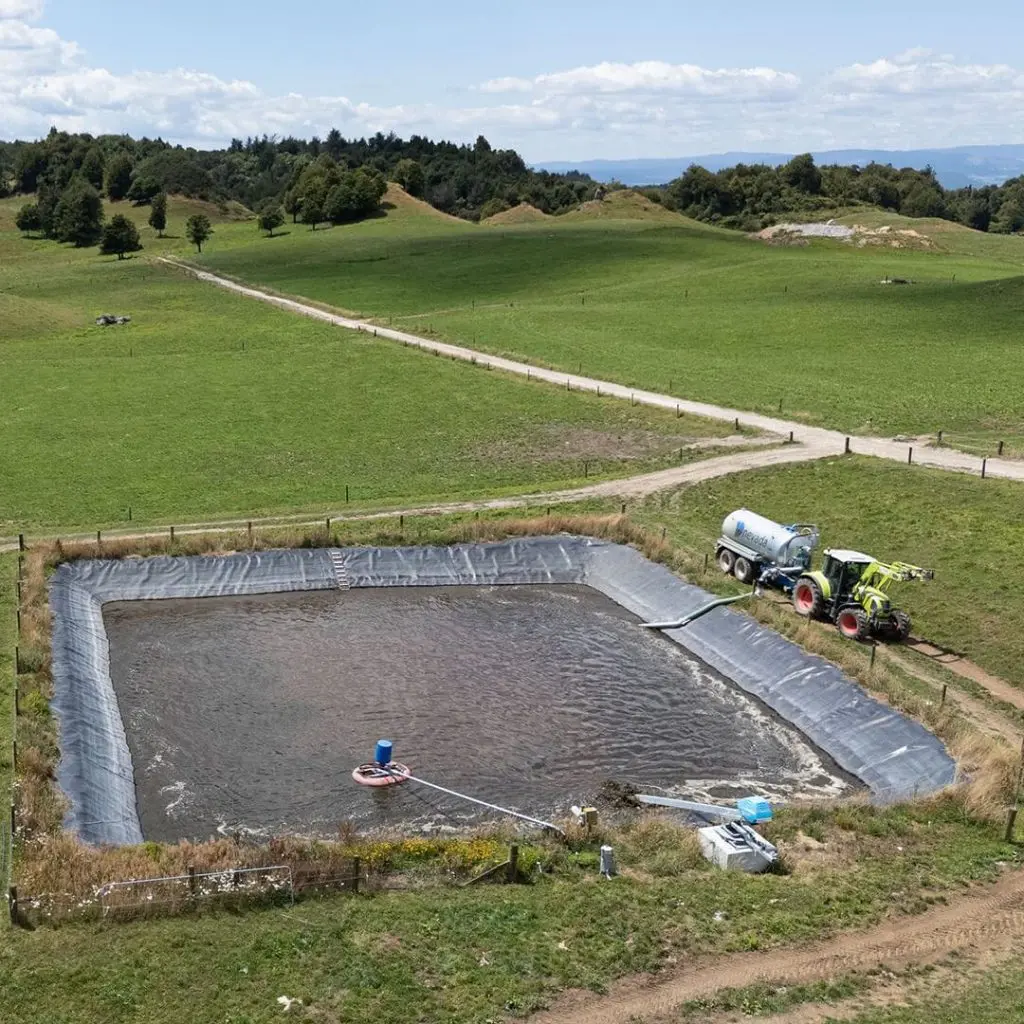

Application Depth
Optimum application depth is determined by the soil infiltration rate, water holding capacity and soil moisture deficit. These are physical characteristics that all farmers should know about their soil. The rate of application must not exceed the infiltration rate; otherwise ponding and run-off will occur. Application depth should not exceed the moisture deficit, which is the water holding capacity less evapotranspiration.
Farm Dairy Effluent Application Area
Application area is important for managing the nutrient balance of your soil. Although the Regional Councils allow 150Kg N/Ha, this is likely to result in excessive potassium application. To ensure your FDE system is optimized for effluent volumes, we recommend you work with a consultant.
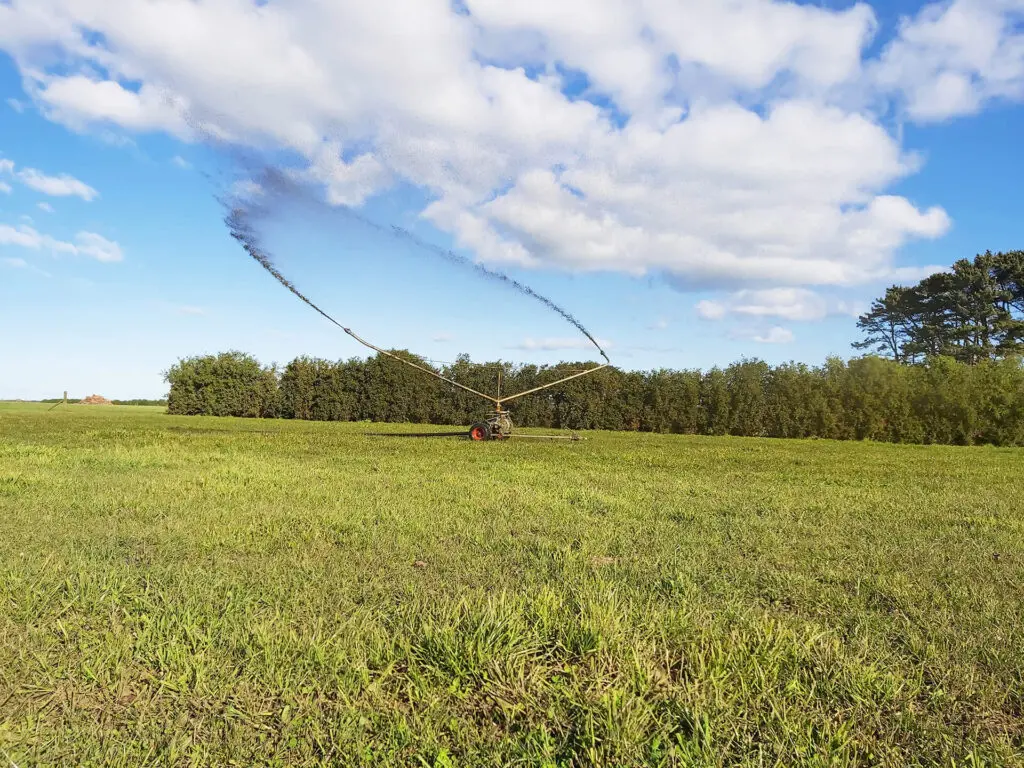
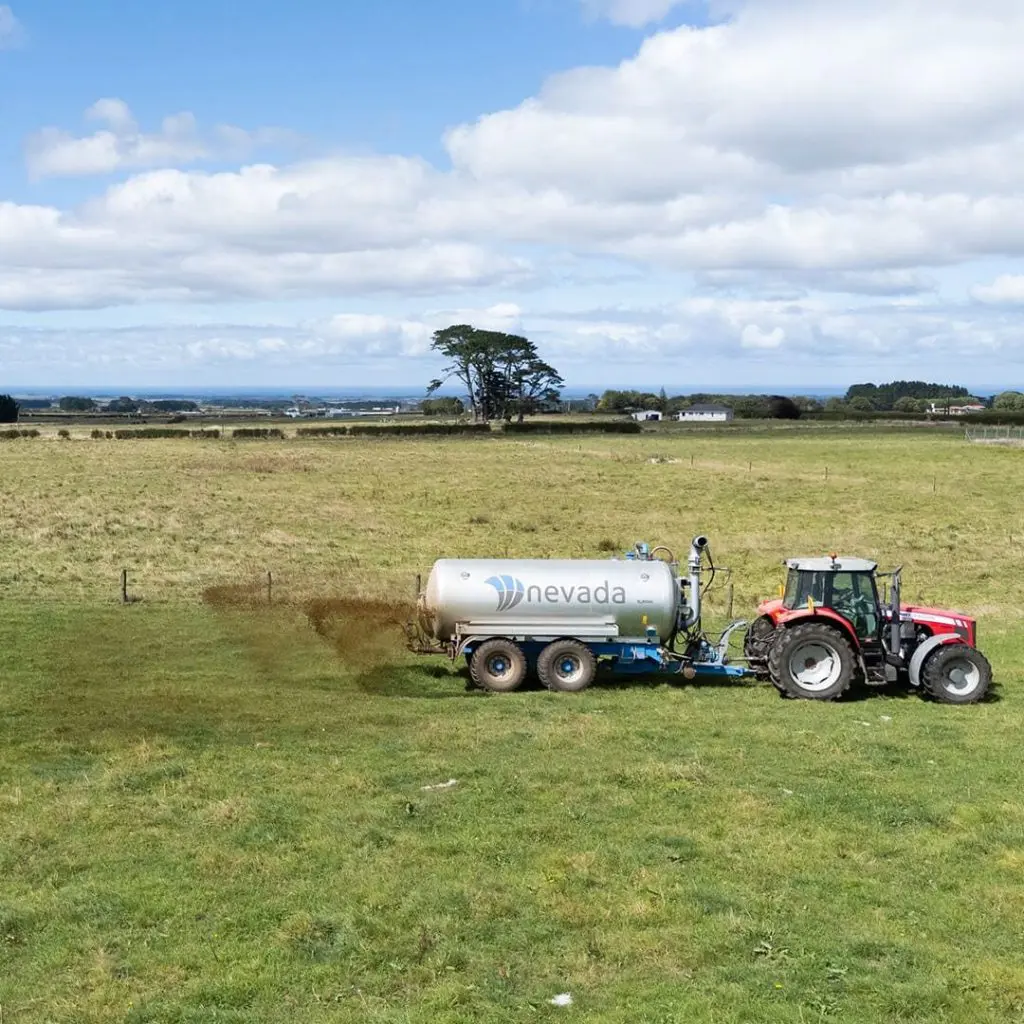
In general, the larger the application area the better; this can be achieved with a range of systems, including the following:
- Travelling irrigators offer 3mm minimum depth, although more typically 8-10mm. They require an extensive pipe reticulation system to increase application area.
- Fertigator and pod systems can be run intermittently to apply FDE at any desired application depth. An extensive reticulation system is required to increase the area of application.
- Slurry tankers have a range of spreading attachments and options. The splash plate on a Nevada tanker will apply 3-5mm in an even spray. Trailing shoes, dropper booms and injector units can also be installed on Nevada tankers to further reduce run-off. The obvious advantage of a slurry tanker is the ability to apply FDE to the entire farm without additional infrastructure.
In Summary
Regardless of which system is used, it is most important that the application depth does not exceed the soil moisture deficit, and soil nutrient requirements are not exceeded. This will ensure maximum response from your free effluent fertiliser. To achieve this, irrigation should be delayed until late spring or summer, and applied to a large area.
We’re Here to Help
When you’re looking to invest in the install or upgrade of dairy effluent systems and equipment, you want to get it right the first time. As accredited effluent system designers with over 30 years experience, we’re here to support you in getting the system and effluent equipment you need for an efficient, effective, council compliant effluent management system that’ll enhance the value of your farm. Give us a call to learn more.
